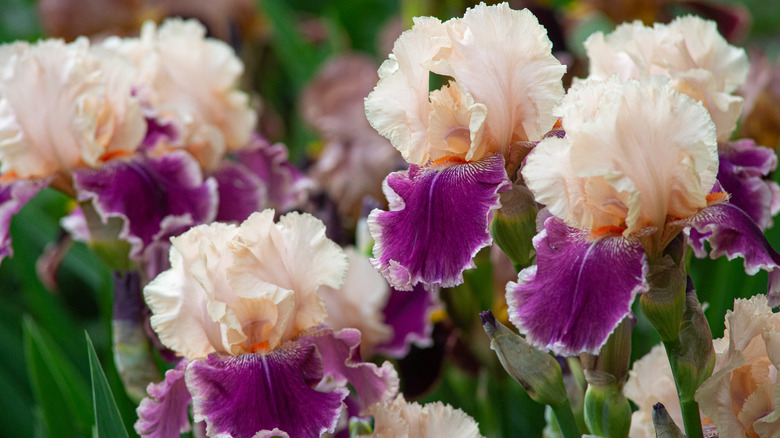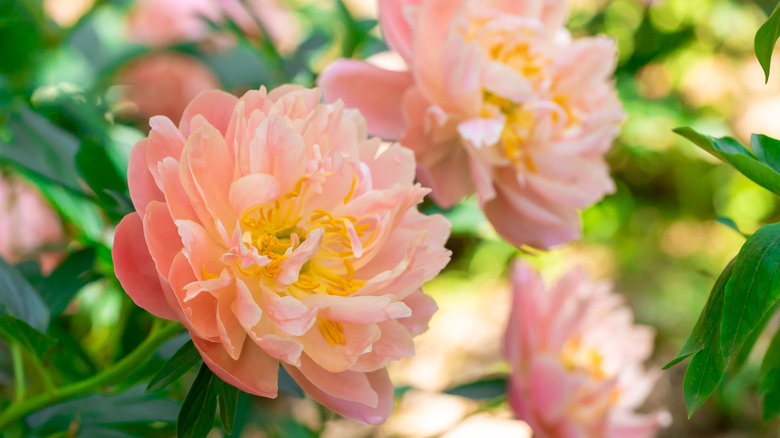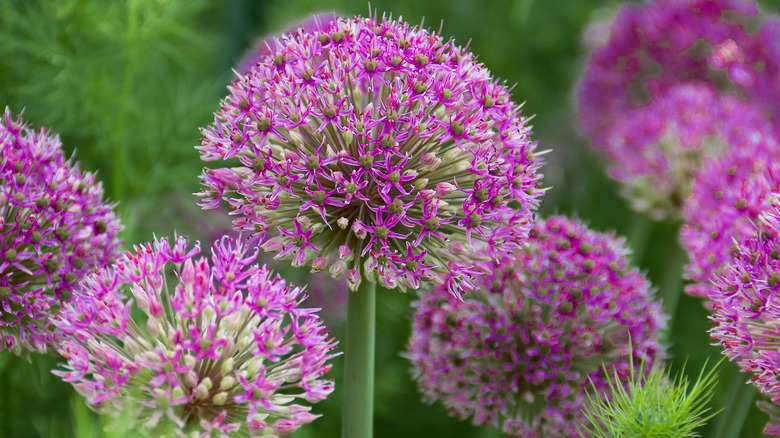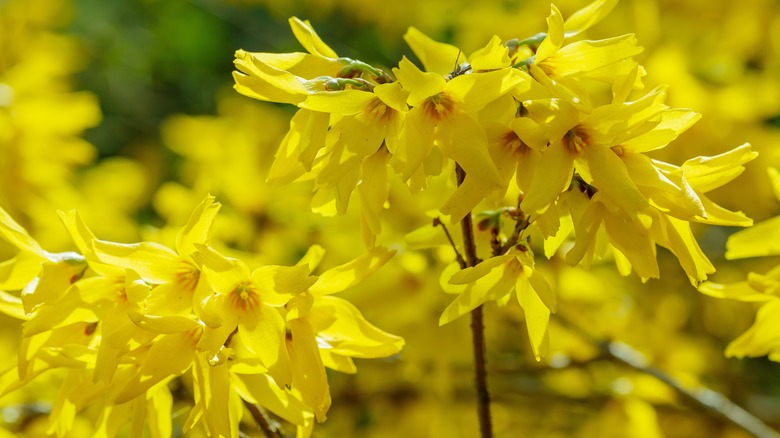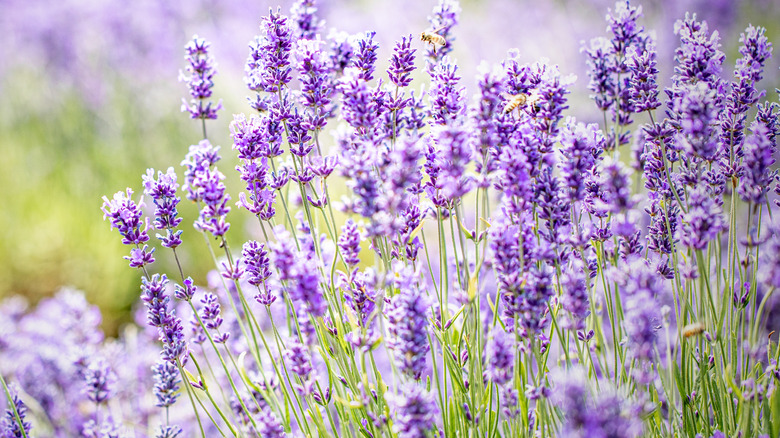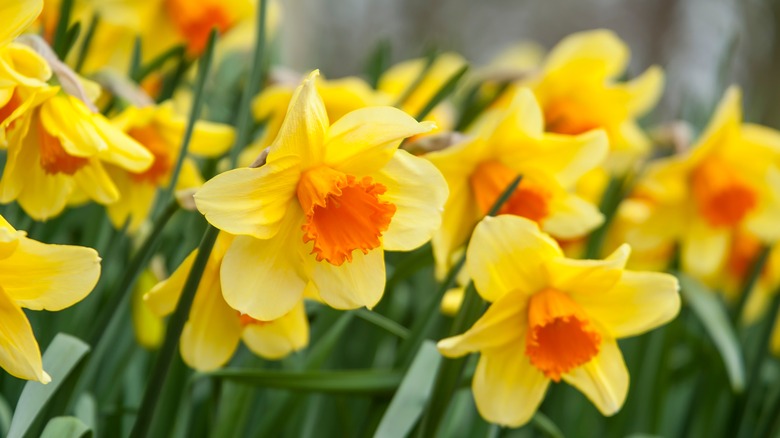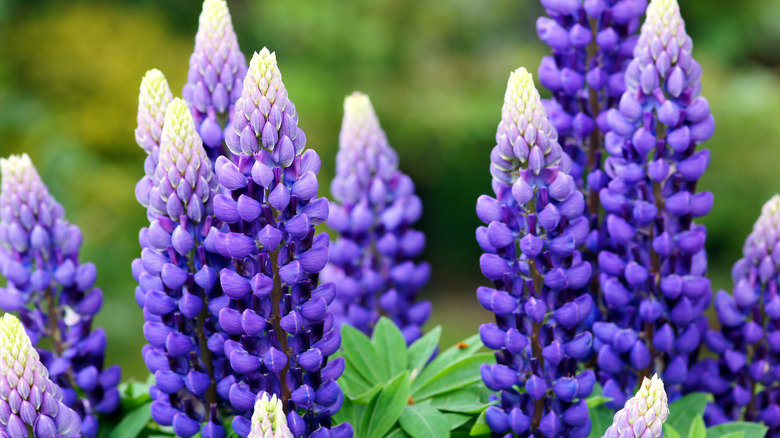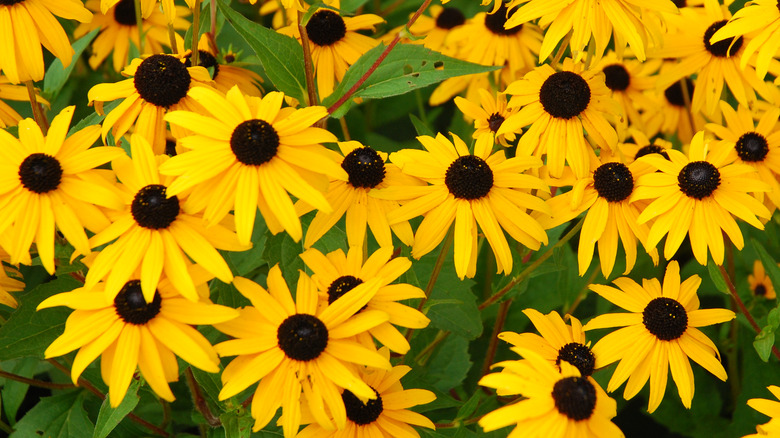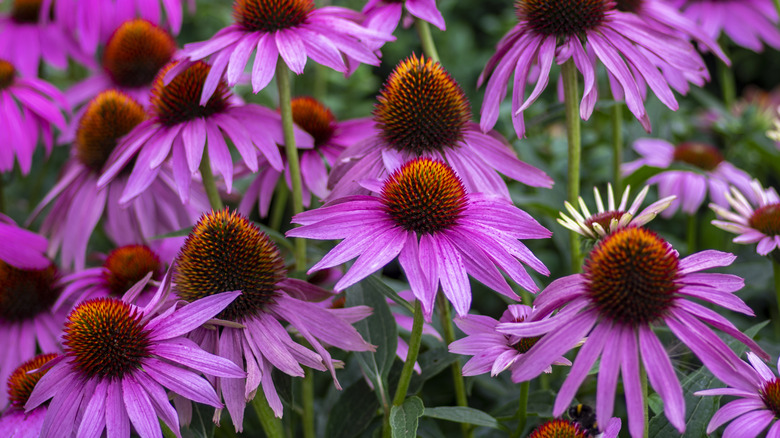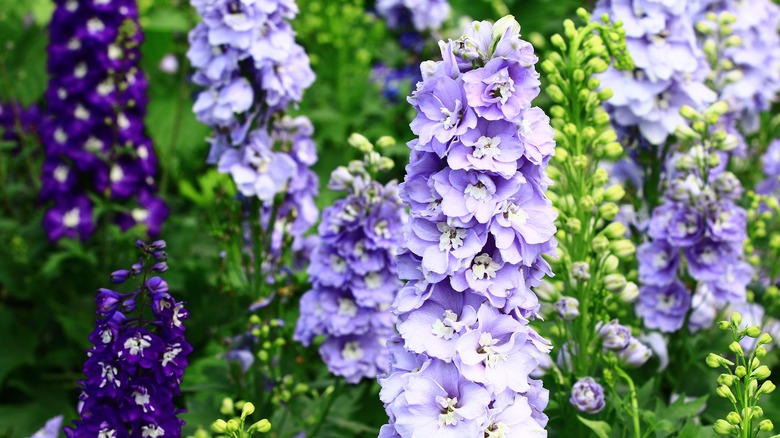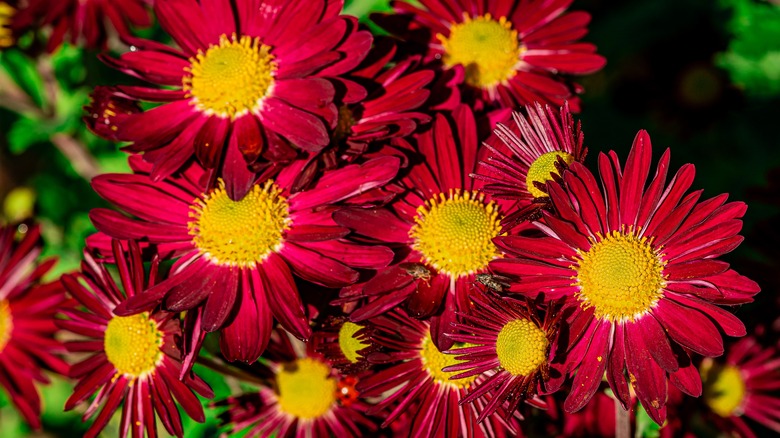10 Stunning Companion Plants That Belong Alongside Irises In The Garden
Irises are flowering plants that grow from bulbs or rhizomes. They are easy to care for and reliably produce eye-catching blooms, making them a firm favorite in the garden. With more than 250 kinds of iris species, there is no shortage of beautiful irises to choose from. The bearded iris (Iris germanica) is considered one of the best types of iris plants to grow in the garden, producing dazzling flowers around May and June. Other popular varieties of iris include the Siberian iris (Iris sibirica) which delivers an abundance of small but pretty blooms in spring and early summer, and the Japanese iris (Iris ensata) which produces some of the largest flowers of all iris species, measuring up to nine inches across.
Iris plants greatly benefit from companion planting for a more dramatic floral display. Since iris blooms have usually faded by late summer, the area they occupy can look tired and scruffy for the remainder of the season. By choosing flowers that bloom later in summer and into fall, you can help to ensure your garden remains neat and colorful for longer. Companion planting is not just for aesthetics; it can be mutually beneficial to the health of plants. You can attract pollinators, deter pests, and even improve drainage and soil conditions by selecting plants that complement your irises. Iris bulbs only take up a few inches in the soil, so they work well as companion plants. We've compiled 10 companion plants, from peonies to painted daisies that make excellent companion plants for irises.
1. Plant peonies behind bearded irises for a flamboyant flowering display
From a visual perspective, the garden flower that pairs beautifully with the bearded iris is the peony. Bearded irises grow from heights of just a few inches to 3 feet, while peonies top out at more than 3 feet. Both plants bloom in spring and early summer, so position irises in front of peonies in your border for a colorful, layered effect. Both plants can grown in USDA hardiness zones 3 to 9, they need well-draining soil, and ideally at least six hours of sun each day.
2. Alliums have low-growing foliage that won't crowd irises
The flowering plant you should be growing alongside iris bulbs is allium because they produce showy flowers around the same time of year, creating a striking visual. Alliums and irises both need similar conditions to thrive, including a sunny spot and well-draining soil. Since the foliage of alliums remains at a low level close to the ground, you won't need to worry about this companion plant leaving your irises in the shade. Like irises, many varieties of allium are drought-tolerant, making them an ideal pairing.
3. Forsythias bloom at the same time as irises
Forsythia is a flowering shrub that blooms early in the spring at around the same time as many bulbs, including irises. The dainty yellow flowers contrast beautifully against purple varieties of iris, such as the 'Purple Serenade' bearded iris. The benefits of planting irises next to your forsythia extend beyond just visual advantages. The two plants require similar growing conditions, including plenty of direct sun. Forsythias and irises are great at attracting pollinators, and since they bloom simultaneously, this means bees and butterflies can easily move between the two plants.
4. Lavender protects irises from pests and disease
Lavender is the ideal companion plant for irises to promote a healthier, flourishing garden. Iris plants can fall victim to several diseases, including bearded iris mosaic virus, iris severe mosaic virus, and iris mild mosaic virus. The best defense against these diseases is prevention, which can be achieved by planting lavenders close to irises. Aphids spread most iris diseases, and since lavenders repel aphids and other bothersome insects, growing them alongside your irises can help protect them. These two plants both enjoy poor to average soil and a sunny site.
5. Daffodils contrast against blue irises
Bright and colorful irises are among the plants that look best next to daffodils in the garden. These two types of spring bulbs both bloom early in the season to put on a dramatic floral display, so they make a great pairing. You can plant a row of daffodils in front of a row of irises for a structured look, or mix the bulbs for a random, wildflower effect. Irises will bloom slightly after daffodils to prolong color and interest. Choose a vivid blue iris for a stark contrast next to yellow daffodils.
6. Vibrant lupines create a rainbow of color alongside irises
Lupines are a hummingbird magnet you'll want to grow in your yard, which can be beneficial to irises and other plants growing nearby. A garden full of pollinators like hummingbirds and bees makes for a stronger ecosystem and an abundance of flowers and fruits. Lupines are perennials that perform well alongside irises because they enjoy similar growing and care conditions. Like irises, lupines come in a huge range of colors including purple, yellow, pink, and blue, so you can enjoy a rainbow of shades when the plants bloom together in summer.
7. Plant black-eyed Susans for continued blooming
Once iris flowers have faded you can keep the garden looking lush and abundant by incorporating other plants alongside them that will continue to bloom throughout the season. Black-eyed Susans (Rudbeckia hirta) represent a brilliant option because they are low maintenance and thrive in similar conditions to irises. Like bearded irises, black-eyed Susans are drought-tolerant and grow best in full sun. Black-eyed Susans are also among the best plants to keep your garden looking full on a budget because they self-seed freely to ensure more plants return year after year.
8. Coneflowers fill in gaps after irises have bloomed
Like irises, coneflowers (Echinacea) thrive in drought, making them the perfect pair in a flowering border. Additionally, poor soil quality is no problem when growing these beautiful plants. Coneflowers produce large daisy-like blooms drawing more pollinators to the garden. These perennials are easy to grow, making them ideal for beginner gardeners. They flower in late summer, shortly after the irises have faded, beautifully filling in the empty patches the bulbs leave behind. Though irises can tolerate some shade, coneflowers need full sun, so be sure to plant them in a bright position.
9. Delphiniums create a bright backdrop for irises
Delphiniums are popular perennials that can reach up to 6 feet in height, providing a stunning background to lower-growing irises. To grow and take care of delphiniums you'll need to plant them in USDA hardiness zones 3 to 7, which is also suitable for growing irises. Like irises, delphiniums thrive in full sun. They prefer to be kept in cool soil so their roots don't get baked; you can achieve this by planting irises around the base of delphiniums to provide shade and protection.
10. Painted daisy plants repel garden pests
Painted daisies (Tanacetum coccineum) make great companions for a wide variety of plants, especially those like irises which get affected by annoying garden pests. This gorgeous flower is a garden pest's worst nightmare because it produces a natural insecticide known as pyrethrin. Pyrethrin is the active ingredient in many commercial insecticides, but you can benefit from its pest-repelling properties just by planting it in the garden. Painted daisies have a long blooming period throughout the summer, filling in the gaps left by irises when their flowers have faded.
